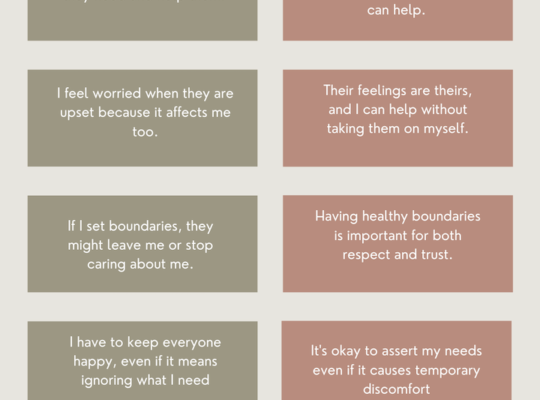Co-dependency can be tricky to spot, especially when you’re in love. But it’s real – and it can hurt your mental health and relationships. Recognizing codependent patterns can be the first step to building a healthier, more balanced connection.

Here’s what you need to know about co-dependency, the signs, and how to start breaking free.
What is Co-dependency?
Codependency, or co-dependency, is when one person relies too much on the approval and emotional support of another. This can feel like a “ride-or-die” loyalty but often means losing your own identity and independence.
Co-dependency is different from healthy interdependence. In a balanced relationship, both partners feel supported yet keep their own sense of self. Co-dependency, however, happens when one or both partners rely on the relationship to feel complete. It’s a tough cycle to break, but doing so is essential for personal growth and peace of mind.
How Does Co-dependency Develop?
Co-dependency often starts with early-life experiences or previous relationship patterns. For instance, people who grew up with a parent who struggled with addiction may develop codependent behaviors to cope. Or maybe you learned that love meant taking care of someone, no matter the cost.
Relationships with emotional trauma or inconsistency can also create these patterns. If you’ve experienced an intense relationship, co-dependency can become a “normal” coping mechanism, even though it’s unhealthy.
Signs of a Co-dependent Relationship
Not sure if you’re experiencing co-dependency? Here are some common signs:
1. Excessive People-Pleasing
Do you feel you have to say “yes” to everything? People-pleasers often put their partner’s needs first, even if it harms their own well-being. Constantly bending over backward for someone can lead to resentment and burnout.
2. Difficulty Setting Boundaries
Boundaries are the invisible lines that define where you end and another person begins. Without boundaries, co-dependency takes over. You might feel uncomfortable saying “no” or feel guilty when you do. This lack of boundaries creates a blurred sense of self.
3. Fear of Rejection or Abandonment
Codependent individuals often fear rejection intensely. You may find yourself clinging to the relationship, scared that your partner will leave. This fear can lead to behaviors that push your partner away instead. Consequently, it creates a frustrating cycle of dependency that is hard to escape.
4. Constant Need for Approval
Do you rely on your partner to feel good about yourself? Seeking constant validation from others to feel worthy is a strong sign of co-dependency. It’s natural to want approval, but needing it to feel okay isn’t healthy.
5. Emotional Dependency
Feeling incomplete without your partner is a significant red flag. Emotional dependency makes it difficult to manage your feelings independently. As a result, you may feel helpless when your partner isn’t there to support you. This dependency can hinder your personal growth and well-being.
6. Taking on a “Caretaker” Role
Co-dependency often includes a “fixer” mindset. You might feel responsible for solving your partner’s problems or managing their emotions. But it’s exhausting. And, honestly, it’s not your job. Everyone is responsible for their own happiness.
How Co-dependency Affects Both Partners
Co-dependency doesn’t only hurt you; it affects both partners. Constantly feeling the need to “fix” your partner or relying on them for happiness can lead to resentment and emotional burnout. It’s draining and often leads to a toxic cycle where both people feel trapped. Instead of connection, you may feel frustration, helplessness, or even anger.
The Impact of Co-dependency on Mental Health
Co-dependency can significantly affect your mental health. Constant worry and fear of rejection often lead to anxiety and depression. Additionally, the need for approval creates an endless pursuit of reassurance. This drains your energy and disrupts your peace. Without a solid sense of self, you may feel exhausted and lost.
Identifying co-dependency is essential for fostering healthier relationships and improving mental well-being. Once you recognize these patterns, you can begin to make changes. Acknowledging these tendencies allows you to rebuild your identity, leading to more balanced and supportive connections.
Steps to Overcoming Co-dependency
If you’ve recognized signs of co-dependency, don’t worry—there are ways to grow beyond it. Here’s how to get started:
- Practice Self-Care: Put time into things that make you happy and fulfilled outside the relationship. Hobbies, friendships, and solo time are essential.
- Set Boundaries: Decide where your comfort zone is and don’t be afraid to say “no” when needed. Boundaries protect your emotional health.
- Get Professional Support: Therapy can be invaluable. A therapist can help you understand co-dependency, why it started, and guide you in changing those patterns.
- Work Towards Interdependence: Healthy relationships allow space for both closeness and independence. Interdependence means you support each other but don’t rely on each other to feel whole.
Wrapping Up
Codependency can feel overwhelming, but you don’t have to live in that cycle forever. Learning to recognize co-dependent patterns is a powerful first step to creating the healthy, balanced relationship you deserve.
Taking these steps toward change is freeing. You’ll discover a stronger sense of self, better mental health, and a healthier approach to love. You deserve to feel whole on your own and share a relationship that lifts you up rather than holds you down.








[…] boundaries blur, and both people lose a sense of independence. Past traumas and low self-worth fuel co-dependency, making us seek validation by constantly pleasing others. With boundary-led thinking, we avoid […]
[…] and Identity in Codependency vs. InterdependenceAnother difference is boundaries. In codependency, boundaries often don’t exist or feel weak. However, interdependence fosters strong, healthy […]